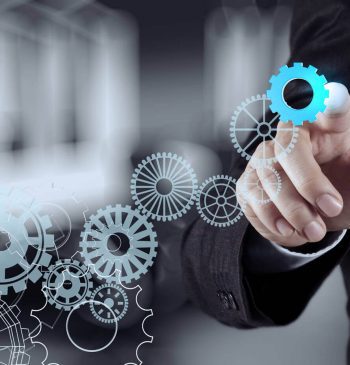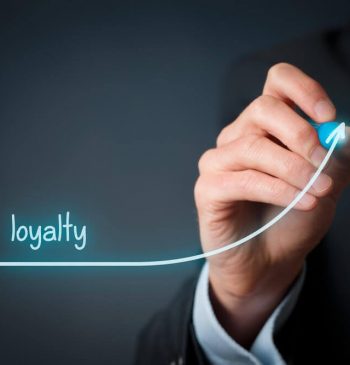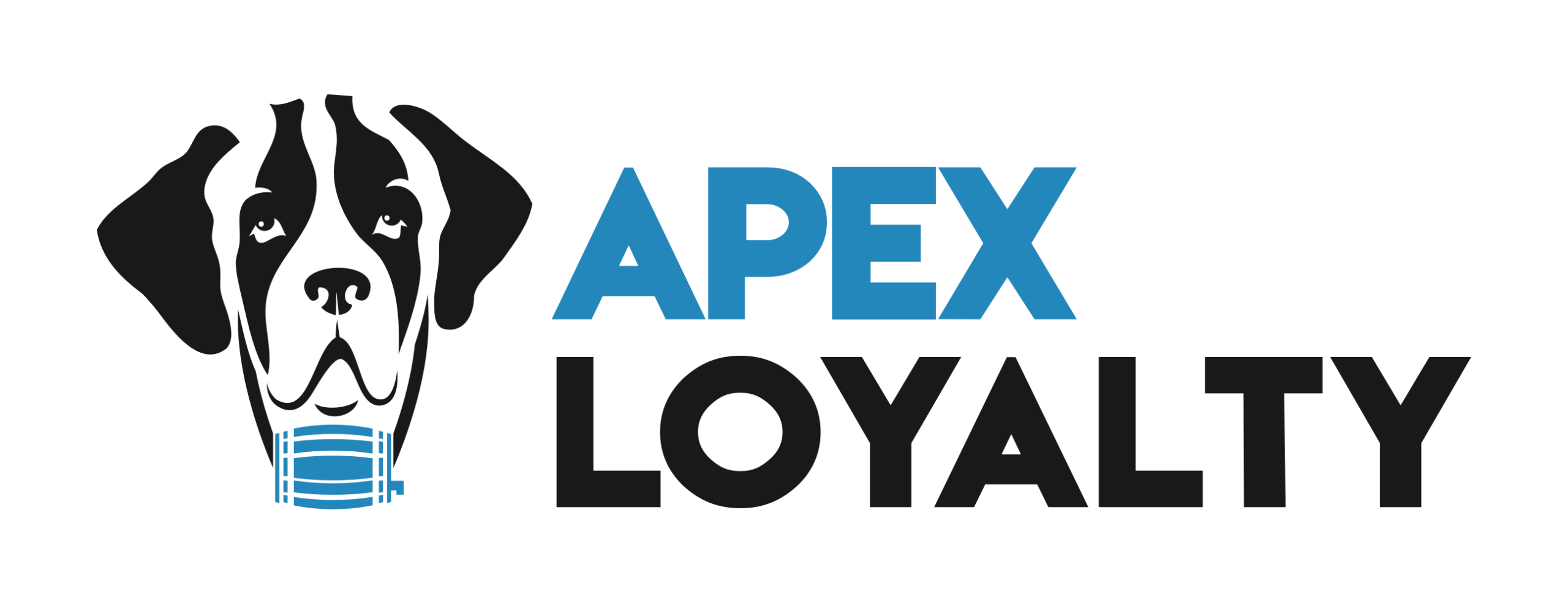25 Aug

Is This Why Your B2B Loyalty Program Isn’t Moving the Needle?
In B2B, plenty of brands launch a loyalty program. Points, catalogs, flashy campaigns… But six months in, you often hear:
“We’re not seeing any real change in sales.”
Why? Because most B2B loyalty programs are designed without truly understanding the channel. Meaning they don’t identify the players and behaviors that actually move the needle in business-to-business sales promotion.
Sound familiar?
- The reward catalog is popular, but SKU focus and shelf share stay exactly the same.
- The same B2B incentive is pushed to all channel customers.
- There are no quality metrics like field verification or training completion, it’s all about volume.
- The distributor → wholesaler → point of sale (retailer) → influencer chain – sales team isn’t managed in one system.
- The program has turned into “campaign management”. behavior engineering, engagement and incremental revenue aren’t even part of the conversation.
- KPIs are vague and commercial ROI can’t be measured.
The Root Cause of Your B2B Loyalty Program Is Not Working
Too many B2B loyalty schemes start with the reflex of “let’s give rewards,” instead of answering these questions first:
- Who exactly makes up my channel? (intermediaries, sales/service points, influencers, online)
- In which channel, and for which specific behavior, will I see the biggest sales and revenue lift?
- How will I measure, verify, and reward that behavior?
Real-World Examples
- Beverages & Spirits: A bartender decides which gin goes into which cocktail, menu placement and on-trade promotions need to be rewarded.
- FMCG: A convenience store owner can place your product ahead of a competitor’s without display compliance (perfect store) and stocking incentives, it won’t stick.
- Pet Care: A veterinarian recommending a medical diet drives conversion, certified training plus recommendation incentives make it happen.
- Consumer Health: A pharmacist suggesting the right OTC product increases basket value, a mix of training and SKU-based targets makes it sustainable.
The bottom line is that B2B loyalty isn’t just a “points program”. It’s the engineering of channel behavior. You first need to map your channel structure and design the right mechanics.
Only then should you bring in the right loyalty technology that’s what makes the difference measurable and drives incremental revenue.
Designing a B2B customer loyalty program without understanding the channel is like running a campaign without a target.
Right channel + right behavior + right mechanics + right tech = measurable growth.
What Exactly Is a Channel in B2B Loyalty Programs?
This is the one that can make or break your B2B loyalty program design:
Do you really know who your channel is?
When most people hear the word channel, they think “distributors” or “retailers.”
But in reality, your channel is every touchpoint between your brand and the end customer that can influence a sale. That includes the people, locations, and intermediaries that don’t just stock your product; they decide how, when, and if it’s sold or recommended.
The Anatomy of a Channel
A channel can be made up of multiple layers, each with a different role and motivation. Here’s what it often looks like in successful B2B loyalty programs:
| Channel Category | Examples | Role in Sales | Why It Matters for Loyalty |
|---|---|---|---|
| Intermediaries (Distributors & Wholesalers) | Regional distributors, authorized dealers | Move product from manufacturer to multiple sales points | Often control product availability and pricing; perfect for distributor promotions |
| Retail Points of Sale | Convenience stores, supermarkets, pharmacies, petshops, tire dealers, etc. | Direct contact with consumers; manage shelf space & stock | Point of sales promotions here can directly shift shelf share. Can offer new products & manipulate consumers decision making. |
| On-Trade Locations | Bars, restaurants, hotels, cafes, bakeries, etc. | Serve products during consumption | On-trade promotions can increase menu placement & usage volume. Can recommend products & manipulate consumers decision making. |
| Specialty Channels | Spas, beauty clinics, veterinary clinics, pharmacies | Recommend or apply products as part of a service | Trust-driven sales; ideal for training + reward incentives |
| Influencers Within the Channel | Bartenders, front desk staff, technicians, plumbers, painting contractors | Shape customer decisions | Recognition & micro-incentives here drive brand preference |
| Online Channels | E-pharmacies, e-commerce, quick-commerce platforms | Sell & promote digitally | Highly measurable promotions & SKU tracking |
Why This Matters in B2B Loyalty Schemes
If you design a B2B customer loyalty program without mapping your full channel structure:
- You risk rewarding the wrong influencers, decision makers.
- You apply the same incentive to every layer, even though motivations differ.
- You can’t measure the real ROI of your B2B promotional strategies.
The best B2B loyalty rewards programs start with one question:
“Which behavior, in which channel layer, will create the biggest incremental revenue impact?”
This is why a B2B channel loyalty program often combines multiple mechanics: distributor promotions for intermediaries, on-trade promotions/incentives for hospitality, training rewards for influencers, and point of sales promotions/incentives for retail.
When you layer these correctly and support them with the right technology, you turn your loyalty program into a measurable sales engine.
B2B Loyalty Programs: Channel Examples by Industry
Different industries require different loyalty strategies. Because their channels operate in different ways. Here are some examples of how leading brands apply B2B loyalty programs tailored to their specific sales structures:
| Industry | Example Brands | Key Channel Types | Explore Full Breakdown |
|---|---|---|---|
| Pet Care / Veterinary CPG | Royal Canin, Hill’s, Purina | Veterinary clinics, pet shops (independent & chain), breeders, online pet retailers, distributors, grooming salons | Pet Care Channel Structure → |
| FMCG – Non-Alcoholic Beverages | PepsiCo, Coca-Cola, Red Bull | Regional distributors, HoReCa (on-premise), Key accounts, convenience/off-premise (independent traditional trade), retail chains, online market/q-commerce | FMCG Channel Structure |
| Regulated CPG – Alcohol & Tobacco | Heineken, Diageo, AbinBev, BAT | Distributors, HoReCa, convenience (independent traditional trade), key accounts, retail chains, events, duty-free/travel retail | Regulated CPG Channel Structure → |
| Snacks / Food Distribution | Mondelez, Nestlé, PepsiCo, Unilever | Distributors/wholesalers, markets/convenience, traditional trade stores, small retail chains, HoReCa, school canteens | Snacks/Food Channel Structure |
| Consumer Health / OTC Medicines | Haleon, P&G Health, Sanofi | Distributors, Independent pharmacies, pharmacy chains, retail health & beauty, hospital pharmacies, online pharmacies | Consumer Health Channel Structure |
| Cosmetic / Wellness | Hydrafacial, premium skincare brands | Beauty clinics, spa/wellness, independent salons, premium retail, providers | Cosmetic/Wellness Channel Structure |
These industries are just examples. If you’re a manufacturing brand or a large distributor operating in markets with:
- B2B sales and channel management
- Fragmented sales networks
- High sales rep dependency
- Communication gaps between trade marketing and field sales
…then you are a candidate for a B2B customer loyalty program designed to drive channel activation.
This applies across verticals, whether you’re in FMCG, industrial products, consumer health, or niche manufacturing. The common thread is this: a well-designed channel loyalty program can turn channel behavior into incremental sales & measurable growth.
Mapping Out Trade Channels by Industry
We’ve broken down how successful B2B loyalty rewards programs work in real-world channel structures:
- Pet Care B2B Loyalty Program Design →
From vet clinics to petshops… How to incentivize behavior across a fragmented, trust-driven channel? - Regulated Consumer Goods (Alcohol & Tobacco) Loyalty Programs →
Learn how leading brands navigate restricted marketing environments through layered on-trade and retail incentives & brand advocacy. - FMCG/CPG B2B Loyalty Program Design →
Designing distributor promotions and off-trade incentives for high-frequency, high-volume environments. - Consumer Healthcare Loyalty Programs →
Combining training, compliance, and SKU-based rewards across pharmacies and healthcare sales points. - Cosmetics & Wellness Loyalty Programs →
Activating influential roles like spa desk staff and beauticians through recommendation-based rewards. - Snacks & Food Service Loyalty Programs →
Driving product focus in fragmented channels from on-trade point of sales to independent traditional trade stores.
Each includes example channel maps, incentive mechanics, and loyalty design principles you can adapt.
Let’s talk and explore how you can activate your channel and how to design a B2B loyalty rewards program that delivers real commercial outcomes.
How Channel Understanding Changes Your B2B Loyalty Program Design
Most brands think they’re running a loyalty program.
In reality, they’re running a one-size-fits-all rewards campaign that happens to hand out points.
When you deeply understand your channel structure, the entire design of your B2B loyalty program changes, and that’s when it starts delivering incremental revenue instead of just “engagement.”
From Generic to Targeted
Without channel mapping:
- Same incentives / rewarding mechanics for different customer profiles.
- Promotions are designed in isolation from the point of sale realities.
- Reporting shows redemptions and participation, but not actual sales impact.
With channel mapping:
- Distributor promotions focus on volume, coverage, and product availability.
- On-trade promotions drive menu placement and real-time product usage.
- Point of sales promotions ensure shelf space, display compliance, and upsell.
B2B rewards program examples show that when you combine these layers, you can track exactly which behavior in which channel delivered revenue growth.
The Big Shift: Behavior First, Rewards Second
A loyalty program for B2B customers is most effective when you start with behavior design:
- Identify the specific actions that will generate measurable growth in each channel layer.
- Build the incentives, gamification & rewarding mechanics that motivates these actions.
- Use tech to verify, track, and optimize in real time.
This “behavior-first” approach is what makes successful B2B loyalty programs stand out from the rest.
Examples of Channel-Driven Loyalty Design
- In spirits, an on-trade promotion rewards bartenders for placing your gin in signature cocktails, usage volume and menu visibility both increase.
- In consumer healthcare, a point of sales training & promotion motivate pharmacists to recommend your OTC brand — SKU sales lift is measured directly.
- In FMCG, distributor promotions tied to sell-in targets help drive penetration into high-potential regions.
These are not “theoretical best practices”. They’re the foundation of top B2B customer loyalty programs that consistently outperform generic schemes.
When you treat “channel” as the most important element in your B2B loyalty strategy, you stop guessing where revenue is coming from, and start engineering it.
The Role of Technology in Making Loyalty Measurable
Even the best B2B promotional strategies will fall short if you can’t measure their impact.
You might be running a clever business-to-business promotion but without the right tech, you’re relying on anecdotal feedback instead of hard sales data.
Why Technology in B2B Loyalty is the Game-Changer
In sales promotion for B2B marketing, you’re often managing:
- Multiple channel layers (distributors, wholesalers, POS, influencers, online)
- Multiple segments of customers in each channel layer
- Different incentive & reward mechanics for each segment
- Regional or seasonal variations in B2B promotion methods
Without technology:
- You can’t verify if the behavior you incentivized actually happened.
- You can’t connect reward redemption to sales outcomes.
- You can’t optimize your B2B sales promotions in real time.
With the right loyalty platform:
- Verification: Photo uploads, Receipt Scan, QR Scan, Sales data integration, or training completion can be tracked automatically.
- Attribution: You know exactly which channel action generated the revenue lift.
- Optimization: Campaign rules can be adjusted instantly based on performance data.
From Activity to ROI
When your B2B loyalty rewards program is powered by a tech stack that integrates with your ordering systems, CRM, and reporting tools, every promotion becomes measurable:
- Was that point of sale incentive/promotion worth the investment?
- Which on-trade promotion delivered the most menu placements?
- Did your distributor promotion actually expand regional coverage, boost sell-in?
These are no longer guesses. They’re answers backed by real numbers.
Once you’ve mapped your channel and built the right mechanics, tech ensures that your business-to-business sales promotions are profitable.
Why Apex Loyalty Stands Out in B2B Loyalty
Many loyalty platforms focus on gamification & engagement. Apex Loyalty goes a step further — enabling you to verify, attribute, optimize & incentivize channel behavior in real time, across even the most complex trade (route-to-market) structures.
From on-trade bartender incentives to distributor compliance programs, Apex Loyalty connects every touchpoint with measurable outcomes.
But it’s also about the partner, rather than only technology.
Designing an effective B2B loyalty program requires more than just a tech stack. You need an activation partner who understands how to align your business goals with channel behavior.
Apex Loyalty combines technology and partnership, helping you define the right strategy, build behavior-first mechanics, and turn your program into a driver of incremental revenue.
Where Do You Go From Here?
If you’ve read this far, you already know the difference between simply “having a loyalty program” and running a successful B2B loyalty program that actually moves the needle.
It starts with mapping your channel, designing mechanics that change behavior, and then putting the right tech behind it to make everything measurable.
Now you have two clear paths forward:
1. Design a Loyalty Program That Drives Measurable Growth
If you’re launching a new B2B customer loyalty program, we’ll work with you to:
- Map your channel structure
- Define the desired behaviors to target
- Build gamification & incentive mechanics that generate incremental revenue
2. Run a Health Check on Your Existing Program
Already running a B2B loyalty program?
We’ll audit your current setup — from incentive design to tracking methods — and show you exactly how to turn it into one of the best B2B loyalty programs in your industry.
Let’s talk about designing — or redesigning — your loyalty program so it becomes your most powerful sales growth tool.
Related Post
About Apex Loyalty
Resources



